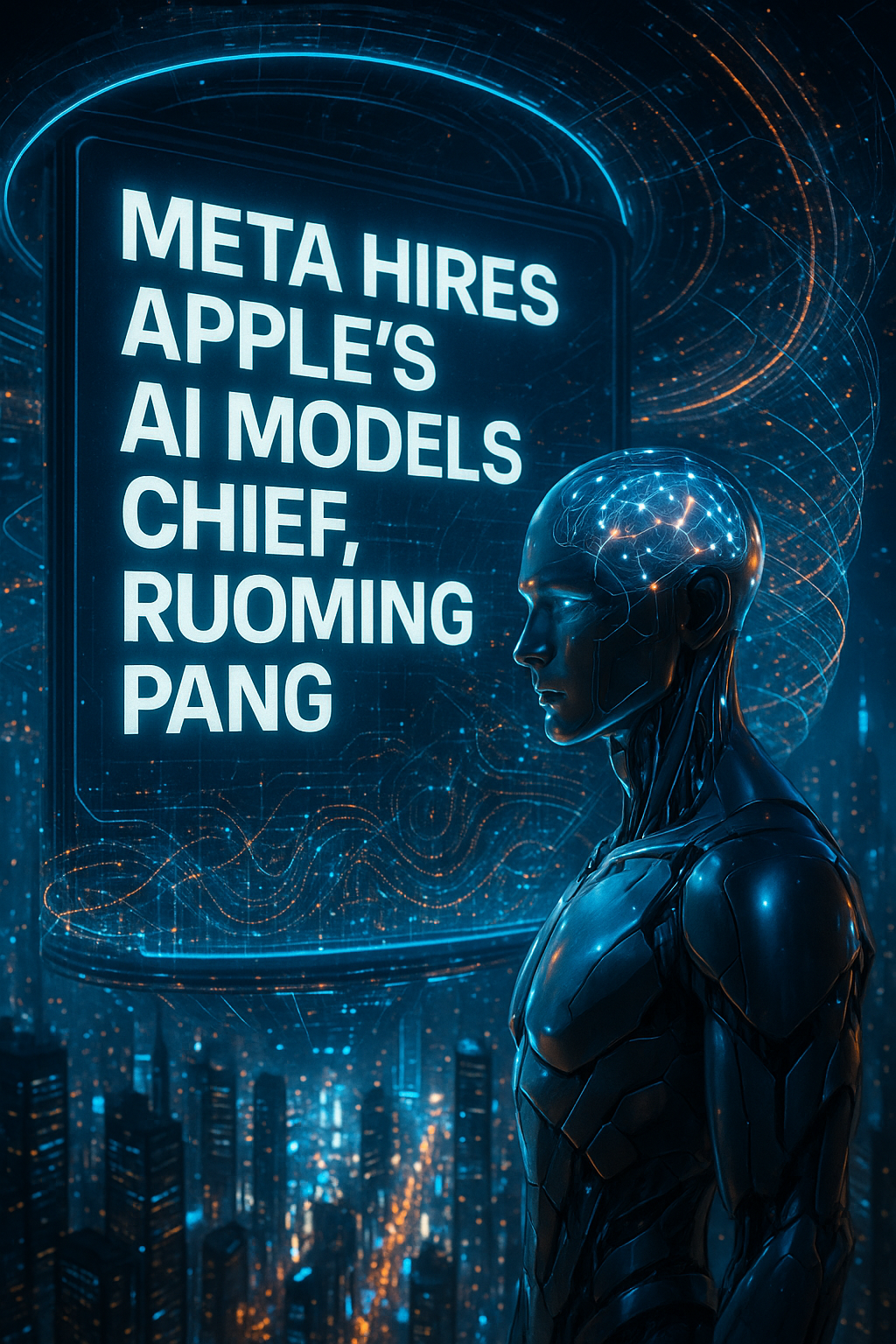
Meta reportedly recruits Apple’s head of AI models
# Meta’s AI Ambitions: What Ruoming Pang’s Move Means for the Future of Technology
Meta’s recent recruitment of Ruoming Pang, formerly Apple’s head of AI models, marks a significant shift in the tech sphere. This move, reported by Bloomberg, is not just another executive transfer; it underscores the fierce competition and strategic realignments within the AI industry. By understanding this development, we can gain insights into trends that might shape the future of AI.
## Meta’s Strategic Play for AI Supremacy
To comprehend the magnitude of Pang’s recruitment, we must first acknowledge the pressing objectives at Meta. For years, Mark Zuckerberg has been steadily building a formidable AI team, focusing on superintelligence capabilities which include advanced AI foundations beyond mere chatbots or recommendation systems. Ruoming Pang’s expertise in training AI foundation models aligns perfectly with Meta’s aspirations, as it increasingly leans into AI development.
Pang previously led Apple’s in-house AI team, which specialized in on-device AI features and the architecture of Apple Intelligence. However, despite Apple’s innovative stature, their AI models have struggled to compete with the likes of OpenAI, Anthropic, and, ironically, even Meta. As reported by Bloomberg, Pang’s departure could signify potential underlying issues within Apple’s AI department—a concern that other executives and staff might share.
## A Personal Dive into AI Evolution
Reflecting on the broader AI landscape, it’s fascinating how quickly the industry has evolved. Remember a few years back, Apple’s Siri represented the cutting edge of consumer AI technology. However, as expectations and the capabilities of AI models have exponentially grown, companies like OpenAI have leapfrogged ahead, setting new benchmarks for what’s possible in terms of machine learning and interaction capabilities.
Working in the tech field myself, I often encounter the daunting task of maintaining competitive edges in rapidly evolving areas. The constant balancing act between innovation, scalability, and market demands is undoubtedly mirrored in these organizational decisions. It’s not just about having advanced algorithms but also delivering consistent and ubiquitous AI experiences that resonate with users and developers alike.
## Apple’s AI Struggles: An Indicator of Larger Challenges?
One cannot discuss Pang’s shift to Meta without delving into the challenges facing Apple. For a company renowned for setting technology trends, lagging behind in AI is notable. Apple’s AI models are reportedly far less capable than competitors, necessitating discussions about possibly using third-party AI solutions for Siri upgrades.
Bloomberg’s sources hinted that more departures could follow Pang’s, suggesting systemic challenges in Apple’s AI endeavors. Whether due to strategic oversight, resource allocation, or the ambitious pace of AI advancement, Apple’s situation raises questions about its long-term AI strategy.
**Key Factors Possibly Contributing to Apple’s AI Lags:**
– **Resource Allocation:** Is Apple dedicating enough resources and efforts to its AI sector as compared to its hardware innovations?
– **Strategic Direction:** Could a lack of prioritization or a clear AI strategy be hindering progress?
– **Talent Retention:** Are there challenges within Apple that are making it difficult to hold onto top AI talent?
Each of these factors could play a role in how Apple navigates its AI initiatives moving forward.
## Learning from Pang’s Transition: The Value of Adaptability
Ruoming Pang’s career move exemplifies a critical learning moment for industry players and observers alike—the need for adaptability in technological pursuits. In a domain that evolves as swiftly as AI, maintaining a static approach or resting on historical laurels can lead to obsolescence.
Meta’s strategic poaching of Pang and other high-caliber talents from Google DeepMind and OpenAI demonstrates the importance of assembling diverse expertise to push boundaries. By integrating a mix of specialists with unique strengths in small, on-device AI models, Meta aims to weave a robust AI tapestry that could redefine interactions in personal, professional, and public spheres.
Professionals and organizations can derive valuable insights from this scenario:
– **Diversified Skillsets:** Building teams that draw from varied experiences and sectors can enrich AI development.
– **Continuous Learning:** Staying attuned to industry shifts and emerging technologies is crucial for sustained growth.
In our increasingly interconnected world, organizations standing on the frontier of AI and machine learning will likely shape global discourse and standards, emphasizing the need for foresight and agility.
## The Emotional Conclusion: Reflecting on AI’s Growing Impact
With AI’s ubiquitous role in our lives—from voice assistants to predictive modeling and automation—the question remains: How will these technologies redefine human experiences? Ruoming Pang’s move from Apple to Meta symbolizes more than an organizational change; it embodies a shift in technological priorities and capabilities.
As Meta bolsters its AI ambitions, we should consider what this means for the industry at large. What does this signal for future AI innovation, and how might users worldwide be affected by these superintelligent shifts? Most importantly, how can we, as technology consumers and contributors, prepare and adapt to the inevitable transformations AI promises?
As we contemplate these questions, the future eager awaits to unfold its narratives, dictated by those daring enough to lead the charge in AI breakthroughs.

